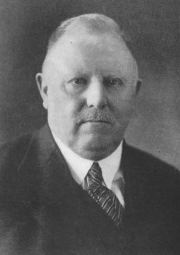Nationality Dutch Fields Physics Role Physicist | Name Willem Keesom | |
 | ||
Born 21 June 1876Texel ( 1876-06-21 ) Doctoral advisor | ||
Willem Hendrik Keesom (21 June 1876, Texel – 24 March 1956, Leiden) was a Dutch physicist who, in 1926, invented a method to freeze liquid helium. He also developed the first mathematical description of dipole-dipole interactions in 1921. Thus, dipole-dipole interactions are also known as Keesom interactions. He was previously a student of Heike Kamerlingh Onnes, who had discovered superconductivity (a feat for which Kamerlingh Onnes received the 1913 Nobel Prize in Physics).
He also discovered the lambda-point transition specific-heat maximum between Helium-I and Helium-2 in 1930 (Basic Superfluids p25/Tony Guenault).
In 1924 he became member of the Royal Netherlands Academy of Arts and Sciences.
References
Willem Hendrik Keesom Wikipedia(Text) CC BY-SA
